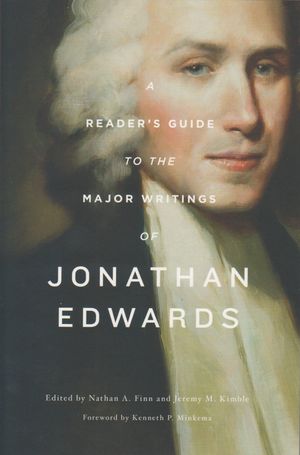This guide introduces readers to the life of Jonathan Edwards and provides an overview of his major writings. His work is frequently referenced and a working knowledge of it will begin to be established for readers.
In just ten chapters, it is inevitable that a few significant writings are unmentioned in this book. A few of Edwards’ sermons are alluded to, but I believe inclusion of such as the seminal ‘The excellency of Christ’ and ‘A divine and supernatural light’, with its all-important emphasis on the Holy Spirit and the nature of the ‘new sense’, would have strengthened the book.
The book utilises bibliographical notes and interacts effectively with other writing about Edwards. Most of the contributors have already written on Edwards and whet the appetite for further reading. There is also important engagement with the great figures of Christian history and with the post-Reformation, mid-Enlightenment and pre-Revolution contexts of Edwards’ writings.
A number of chapters are outstanding. Dane C. Ortland’s ‘How to read Jonathan Edwards’ is essential reading for any newcomers. He suggests that there are two ways to get to know Edwards’ theological framework.
First, recognise him by an ‘Outside-in’ approach. Edwards would have identified as a ‘Christian, Protestant, Reformed, evangelical, Calvinistic, Congregationalist’. These are concentric circles, ‘Christian’ being the largest and ‘Congregationalist’ the smallest. Regarding the latter, Edwards moved towards where his heart really lay, Westminster Confessional Presbyterianism.
Second, recognise Edwards by an ‘Inside-out’ approach. Ortland says that, for Edwards, Christianity is a ‘fountain of love, into which one is swept up’. When thinking about God, ‘triune beauty enjoyed’ (p.31) describes it best. Sanctification is ‘beautification’ (p.32). We should certainly be Reformed and orthodox, but also evince radiant animation. This is why reading Edwards himself (rather than about him) is the most invigorating approach.
Michael McClenahen on ‘Justification by faith alone’ is superb and timely for all tempted by the recent New Perspective on Paul. He looks at why Edwards spent so much time on this doctrine, finding his particular target to be Arminianism.
McClenahen summarises superbly what, for Edwards, is the consequence: ‘True Christians are therefore those who have been justified at the moment of their conversion. They do not wait anxiously for the possibility of justification on the final day; they are already admitted to a “title to that glory”’ (p.85).
Chapter 6, by Rhys Bezzant on David Brainerd is a superb summary of key themes for a 21st century church. Edwards’ Life of David Brainerd has always been his most popular work, because of its portrayal of Brainerd’s example of rugged, obedient godliness. However, Bezzant wants us to recover the missiological focus too. ‘Missions would expedite the coming of the Kingdom’ (p.125). Brainerd is a cross-cultural, ‘think outside the box’ pioneer. He, like Edwards, was an optimistic Postmillennialist: God’s glory will be globally redolent.
Chapter 7, by Gerald McDermott on the ‘Religious affections’ is my favourite. This chapter is central to understanding Edwards. It is brilliant on analysis and strong on what the ‘affections’ are: ‘the more vigorous and sensible exercises of the inclination and the soul’ (p.98). To confuse them with ‘emotions’, as does Paul Helm in chapter 10, is a major error.
Helm has written elsewhere of his view that the Religious Affections is a political work based on the ideas of John Locke. But, for Edwards, there is no ‘heat without light’. We are whole people, united in soul and self. He never makes affections equal to feelings.
Moreover, Edwards never says that affections are emotionally motivated by pleasure and pain. Nor does he break with orthodox Reformed figures, such as Owen and Flavel. Like them, he firmly believed that true religion will always have the ‘knowledge of the loveliness of divine things’ (p. 98). The mind is always involved in all affections.
Provided we do not take Paul Helm’s views seriously (as he believes we should not do for Edwards’ Religious Affections), this book is an excellent introduction to most of Edwards’ writings.
Roy Mellor
Bicester









